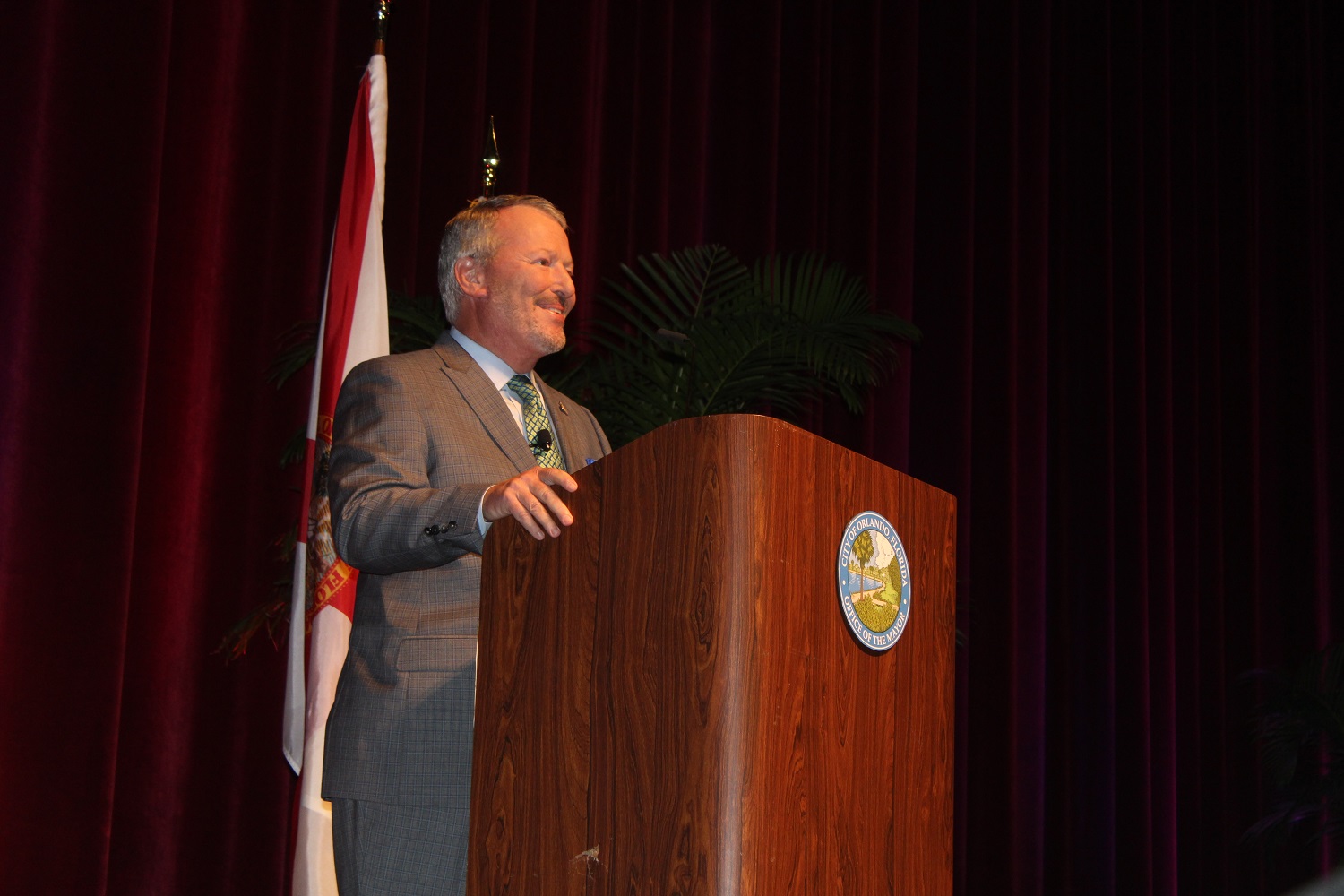
Orlando Mayor Buddy Dyer appeared before a crowd at the Bob Carr Theater to deliver his annual State of Downtown address, which focused not so much on new ideas as it did on refinement of old ones.
Namely, he spent most of the speech focused on the betterment of the Parramore neighborhood, long an area of concern for the city.
Once a thriving community, the neighborhood had sunk into crime and poverty by the time Dyer took office. Since then, local government organizations have put together programs to advance jobs and education in the area, intending to help the residents who need a hand.
Dyer said things have gotten better in Parramore this year, with lower crime rates (with juvenile crime down 61 percent as of Tuesday) and programs like Parramore Kidz Zone having helped many youths in the area go to school. There are more jobs, he said, and they’ve added new parks and amenities to make Parramore a more pleasant place to live.
“A lot communities would consider our work done,” he said. “But here in Orlando, we dream bigger, and the residents of Parramore have dreamed bigger, and they want more for their neighborhood. Our shared dream is to return Parramore to a neighborhood of opportunity that celebrates its rich history. We want Parramore to be a place where someone can grow up, have immediate access to education, and apply that education to a modern career, all without ever leaving downtown Orlando.”
Dyer then went on to speak of a number of improvements laid out for the years to come – UCF and Valencia’s new downtown campus, slated to open in 2019, and beyond that, a creative village poised to make downtown Orlando a hub of innovators, residents and businesses for as far in the future as one could imagine.
They’re also looking at more housing, especially with the intent of getting more people into Parramore – the numbers, as it has been reported in the past and as Dyer reiterated Tuesday, have shrunken drastically in the last few decades.
“In the 1960s, there were 18,000 residents in Parramore,” he said. “There are just over 6,000 today. The future of Parramore depends on bringing residents back. Anyone who wants to live here should be able to live here.”
Then he rattled off some of the city’s projects coming up: they’ll be putting out a RFP in 2017 for the development of over 20 city-owned lots into new affordable housing.
A vacant six-acre site will be transformed into a mixed-income housing development called Parramore Oaks, which will have 211 units split between affordable housing, permanent supportive housing and market-rate housing.
A new 256-unit multi-family development called Amelia Court at Creative Village will provide a new option for those looking to live near the Parramore Community School and the UCF/Valencia Downtown Campus, with groundbreaking expected late next year. That project will cost $56 million.
Dyer also touched on the fact that I-4 “divides” downtown into east and west factions, which is something he’d rather not have anymore.
“I-4, and the parking lot underneath, has been a barrier to downtown Orlando,” he said. “The overhaul going on – you’ve noticed it, right? – gives us an opportunity to transform that lot into a gathering space that will help tie downtown together, rather than divide us.”
The Under I project, as it’s been dubbed, will be a three-block park area full of various athletic, food, art and technology-based activities.
The underlying theme of everything Dyer brought up, from the city’s upcoming sports events to its efforts at helping the homeless the past few years, was unity. He posed that if the city could erase any semblance of being divided, that there was nothing that could stop it from growing and thriving into something of a modern Metropolis.



